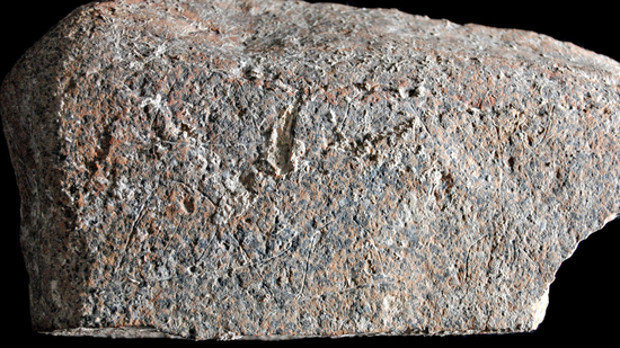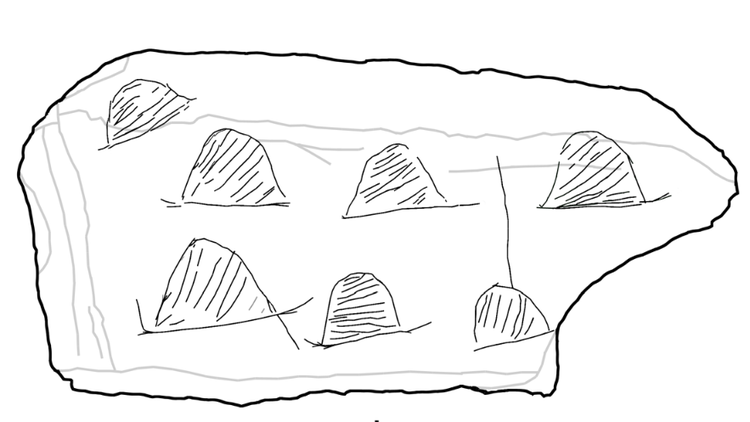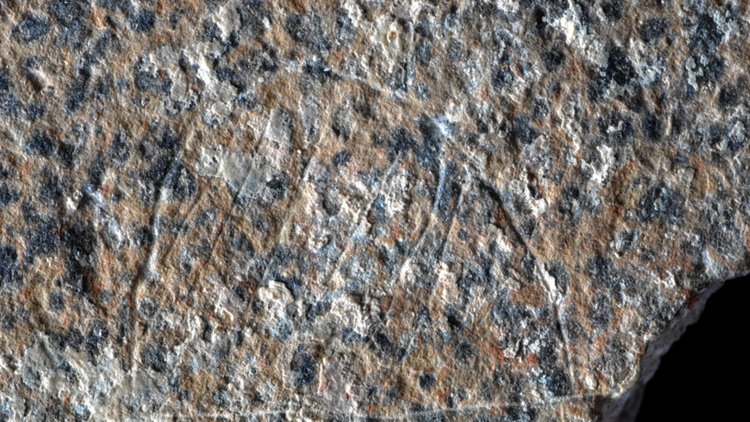
The ancient engraving dates back about 13,800 years to the upper Paleolithic era. It was unearthed at the Moli del Salt site in Spain, about 30 miles west of Barcelona.
If you look closely, you can make out what look like seven semi-circular huts that were drawn on a slab of stone, probably with another rock or a pointed flint artifact.
Archaeologists say the find is especially exciting because it breaks the rules of prehistoric art, which generally follow very strict stylistic and thematic conventions, and usually involve animals, non-figurative signs and the occasional human figure.

The largest of the hut drawings is about 1.5 inches wide and 0.8 inches high. The entire slab measures 7 inches wide and 3 inches high.
The authors note that the huts in the engraving are arranged in three levels, and that the artist appears to be trying to create a visual sense of depth.
García-Diez, of the University of the Basque Country, Spain, and Vaquero, of the Catalan Institute of Human Paleoecology and Social Evolution, said that when the engraved rock was initially discovered in 2013, it was unclear that it was anything special.
"It was very dirty and partially covered by a crust," they wrote in a joint email to the Los Angeles Times. "Only some days later, when the cleaning of the slab was finished, were we aware of the importance of the piece."
Although 12 other engraved objects were discovered at the site, this is the only one that departs from the artistic conventions of the time, the authors said. All the other pieces have depictions of animals, or signs linked to magic or religion that are typical of the late-Paleolithic style.
Of course, García-Diez and Vaquero admit that they cannot say with certainty that the images depicted on the slab are indeed a campsite.
"We are afraid the only way to be 100% sure would be to have the artist in front of us and ask him or her about his or her intentions," they said. "However, we can think of no better explanation."
To back up their interpretation, the archaeologists turned to ethnographic data. They write that domed shape huts with a similar morphology to those depicted in the engraving are the preferred shape of temporary dwellings constructed by hunter-gatherer societies throughout the world.
They also point to previous work that suggests groups described as "generic hunter gatherers" make camp with an average of 3.9 to 7.6 individual households.
"The seven huts in the engraving fit perfectly with this mean number of households," they write in the paper.
Depictions of homes become more common after the appearance of sedentary communities in Neolithic times about 11,500 years ago, the authors said.
So if those scratches on the rock were indeed meant to depict a human landscape, then the ancient rebel artist who made them was way ahead of his or her time.




Reader Comments
to our Newsletter